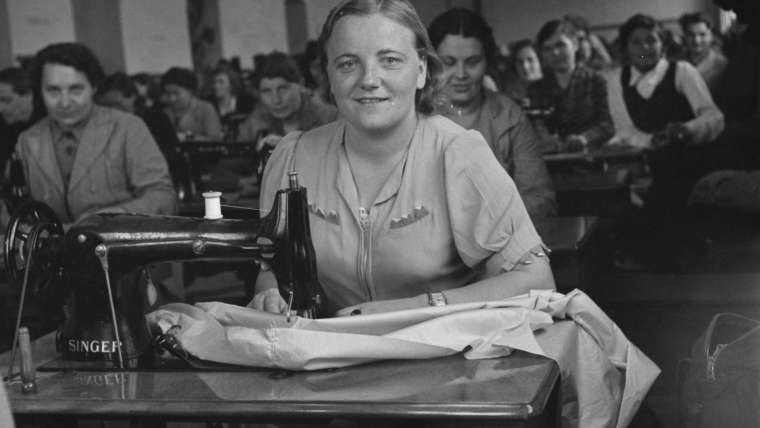Cold War Radio Museum Voice of America Then and Now Historically, partisanship at the Voice of America has been most often associated with Left-wing bias of some of its officials and central English newsroom reporters. By Ted Lipien After leaving the White House in 1961, former President Dwight D Eisenhower condemned a biased Voice of America (VOA) reporter who…
Vice President George H.W. Bush interviewed for Voice of America by Ted Lipien and Wayne Corey in 1987
Cold War Radio Museum Voice of America (VOA) Polish Service director Ted Lipien and VOA English Service correspondent Wayne Corey interviewed the then Vice President George H.W. Bush on September 24, 1987 in his office in Washington shortly before his trip to Italy to see Pope John Paul II and to Poland to confer with government and opposition leaders.…
Cold War Radio Museum Patricia Gates Lynch Ewell, U.S. ambassador and broadcaster at the Voice of America (VOA), a tax-funded U.S. government media outlet for foreign audiences where she was known as Pat Gates, was a remarkable radio personality. She may have had more listeners to her English-language programs than Willis Conover’s VOA jazz programs in English, although various…
Polish refugee children with several caregivers at Santa Rosa, Mexico. Julian Plowy Family Album. Before being transported to Mexico in 1943, these Polish children were for close to two years prisoners in Soviet Russia along with their parents and families. Some of them lost their mothers and fathers, sisters, brothers, grandparents and other close family members. They witnessed unspeakable atrocities…

U.S. Government Propaganda Photo, 1943 By Ted Lipien Support Silenced Refugees A U.S. Government propaganda photo showing an unidentified Polish woman and other Polish women making their own clothing at a Red Cross refugee camp in Iran was taken by the Office of War Information (OWI) photographer in 1943. A few months earlier, the women were prisoners and slave laborers…
Polish refugee children with two adults, Santa Rosa Colony, Mexico. Julian Plowy Family Album. Before being transported to Mexico from India in 1943 on a U.S. Navy ship, these Polish children were for close to two years prisoners in Soviet Russia along with their parents and families. Some of them lost their mothers and fathers, sisters, brothers, grandparents and other…
Polish refugee children, most of them girls, at the Santa Rosa camp in Mexico. Julian Plowy Family Album. Before being transported to Mexico from India in 1943 on a U.S. Navy ship, these Polish children were for close to two years prisoners in Soviet Russia. Many had lost their parents, siblings and other family members. They had witnessed unspeakable atrocities…
Support Silenced Refugees Polish military officer, writer and artist Józef Czapski, who had made a futile search for thousands of missing Polish officers in Soviet Russia during World War II killed on the orders of Stalin in 1940, was censored by the Voice of America (VOA) during his visit to the United States in 1950. Later, under tremendous pressure from…
U.S. Government Propaganda Photo, 1943 Support Silenced Refugees The cinema newsreel British Pathé film shot in in 1943 a propaganda film about Polish refugees who had come from the Soviet Union to Iran. The film is remarkable for the scarcity and vagueness of information about why these Poles were evacuated to Iran and what had happened to them earlier in…
U.S. Government Propaganda Photo, 1943 Support Silenced Refugees Some of the Polish prisoners and slave laborers in Soviet Russia during World War II who had survived, were evacuated first to Iran and became refugees, were temporarily resettled in India. Their story was described in “A Little Poland in India,” a 2015 Indo-Polish co-production documentary by Any Radha and Sumit Osmand…
The cover image, which is not taken from the Santa “Rosa: Odyssey in the Rhythm of Mariachi” video, is from the family album of Julian Plowy, a former Santa Rosa Polish refugee child. “Santa Rosa” documentary reveals an unknown chapter in the history of World War II – the fate of Polish deportees into the Soviet Union who found unlikely…
Cold War Radio Museum During the Cold War, it would have been unthinkable for the United States government to put in charge of U.S. international broadcasting through the Voice of America (VOA) an American businessman like Armand Hammer who had made millions for his company in various business deals with Soviet Russia. U.S. international broadcasting and business activities behind the…
U.S. Government Propaganda Photo (1943) By Ted Lipien This U.S. Government propaganda photo showing a healthy-looking Polish boy was taken by the Office of War Information (OWI) photographer in Iran in 1943. To protect Stalin and the anti-Germany military alliance with Moscow, pro-Soviet propagandists in President Franklin D. Roosevelt’s administration did not publish photos of Polish children who were starved,…
Support Silenced Refugees Lieutenant Colonel Henry I. Szymanski was a U.S. Army Liaison Officer to the Polish Army created under the command of General Władysław Anders during the Second World War II which fought the Germans alongside American and British troops in North Africa and Italy. On November 22, 1942, Lt. Col. Szymanski sent a report on Polish-Russian relations to…
U.S. Government Propaganda Photo, 1943 Support Silenced Refugees This U.S. Government propaganda photo showing a Polish refugee boy was taken by the Office of War Information (OWI) photographer in Iran in 1943. To protect Stalin and the anti-Germany military alliance with Moscow, pro-Soviet propagandists in President Franklin D. Roosevelt’s administration did not publish photos of Polish children who were starved,…